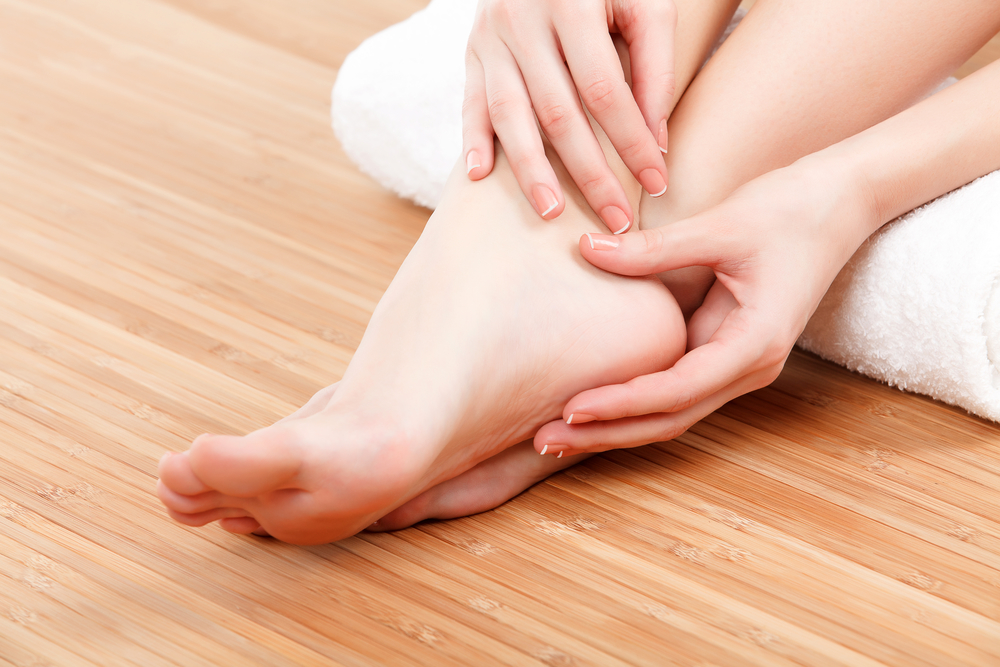Foot Care Tips for Diabetics

By Dr. Steven Neufeld
Foot injuries are uniquely serious for people with diabetes. As the disease decreases blood flow, it also restricts the healing process. Even a small injury is at a higher risk for infection or complications that could be serious.
30.3 million Americans have diabetes, and up to 70 percent also suffer from a complication of neuropothy, a serious nervous system impairment that causes a loss of feeling in the hands and feet. Because of this, diabetics are at risk of not realizing when they have a foot injury. Unfortunately, this can lead to minor injuries quickly developing into major emergencies.
I have seen many patients suffer a foot injury simply because there was a rock in their shoe that they were unable to feel.
But the good news is that most injuries can be avoided by developing – and adhering to – a careful routine for foot care. If you do find an injury, no matter how small, it’s important to immediately visit your doctor. Medicare, and most insurance companies, recognize the value of routine diabetic foot care, and will cover the visits, treatment, and special shoes or pads to protect you from further injury.
Because of the danger for infection – which can spread more quickly for diabetics – immediate medical care is important for even a blister. In reality, that minor injury may be a sign of a more significant injury. Swelling or pain could indicate a fracture or broken bone underneath, and a little red toe could signify a deeper, ingrown toenail that is already badly infected.
Your foot care routine should focus on inspecting your feet for injury on a daily basis, ensuring they stay warm to prevent further decreasing the blood flow, and protecting the skin from becoming dry and cracked, which can serve as an entry point for bacteria and infection. Here are a few simple tips:
Foot Care Tips:
- It’s critically important to keep your feet warm. This includes wearing loose socks to bed, wearing warm shoes and socks in the winter, and making sure they don’t get wet in the snow or rain.
- Inspect your feet every day for injuries you may not have noticed. Look for puncture wounds, bruises, pressure areas, redness, warmth, blisters, ulcers, scratches, cuts and nail problems. Have someone help you, or use a mirror for better visibility. Then feel each foot for swelling, examine between your toes, and check six key locations: The tip of the big toe, the base of the little toes, the base of the middle toes, the outside edge of your foot and across the ball of your foot. Call your doctor if your foot appears swollen or has changed shape.
- Wash your feet every day with mild soap and warm water, but don’t soak them. Be sure to test the water temperature with your hand first, and pat each foot carefully to dry it. Be careful between your toes.
- Use quality lotion to keep the skin of your feet soft and moisturized – but don’t put any lotion between your toes.
- Trim your toenails straight across, and avoid cutting the corners. Use a nail file or emery board. If you find an ingrown toenail, see your doctor.
- Don’t smoke or sit cross-legged – both of these activities further decrease the blood supply to your feet.
Recommendations for Shoes & Socks:
- Never walk barefoot.
- Avoid wearing sandals or thongs.
- Choose and wear your shoes carefully. I suggest buying new shoes later in the day, when your feet are naturally a bit larger. And, it’s important to buy shoes that are immediately comfortable without a “breaking in” period that could cause blisters – an opportunity for infection and more significant injuries.
- Wear proper shoes for any activities or sports you may be involved in. Choose looser fitting shoes or boots, as tight ones will further restrict blood flow to your feet. If you wear orthotic devices in your regular shoes, be sure to transfer them to your ski boots, hiking boots or running shoes.
- Wear clean, dry socks and stockings.
- If you plan to be in the cold, wear winter weather socks that will allow air to circulate inside your shoes.
Dr. Steven Neufeld is a foot and ankle surgeon and the founder of The Orthopaedic Foot & Ankle care center, offering a variety of foot and ankle procedures including the total ankle replacement. Dr. Neufeld is a Clinical Professor in the Department of Orthopedic Surgery at Virginia Commonwealth University and a Clinical Instructor at Georgetown University Department of Orthopaedic Surgery. He is active in clinical and biomedical research, and is a fellow of the American Academy of Orthopaedic Surgeons, a board member of The Centers for Advanced Orthopaedics and a board member of the American Orthopaedic Foot & Ankle Society Foundation.

